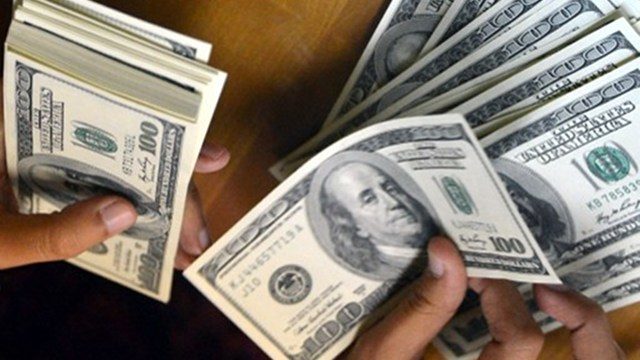SUMMARY
This is AI generated summarization, which may have errors. For context, always refer to the full article.

MANILA, Philippines – Following two straight months of thin reserves, the country’s foreign exchange reserves inched up to $80.31 billion in end-September, the Bangko Sentral ng Pilipinas (BSP) reported Wednesday, October 7.
Last month’s registered gross international reserves (GIR) or the sum of all foreign exchange flowing into the country, stood higher with a $59.6-million increase. The country’s foreign exchange reserves thinned for two straight months after reaching $80.64 billion in end-June to $80.33 billion in end-July, and to $80.25 billion in end-August.
The reserves serve as buffer to ensure that the Philippines would not run out of foreign exchange that it could use to pay for imported goods and services, or maturing obligations due to external shocks. If necessary, the central bank buys dollars from the foreign exchange market to prevent sharp depreciation of the peso. It can also sell to avoid sharp appreciation of the local currency.
Slight uptick
BSP Deputy Governor and now Officer-in-Charge Diwa C. Guinigundo traced the slight uptick in the GIR in September to the BSP’s foreign exchange operations and its income from investments abroad, as well as the national government’s net foreign currency deposits.
Foreign exchange inflows were partially offset by payments made by the national government for its maturing foreign exchange obligations and revaluation adjustments on the BSP’s gold holdings and foreign currency-denominated reserves, he explained.
Data released by the central bank showed the BSP’s gains from foreign exchange operations jumped 26% to $1.08 billion in end-September from $855.7 million in end-August.
The end-September GIR level remains ample as it can cover 10.3 months’ worth of imports of goods and payments of services and income, Guinigundo said.
The GIR level was also equivalent to 6.1 times the country’s short-term external debt based on original maturity and 4.4 times based on residual maturity, he added.
The BSP expects the Philippines to end the year with about $81.6 billion in dollar reserves. The country’s balance-of-payments position – the summary of all transactions between the Philippines and the rest of the world – to post a surplus of about $2 billion, a reversal of the $2.9 billion deficit booked in 2014. – Rappler.com
Add a comment
How does this make you feel?
There are no comments yet. Add your comment to start the conversation.